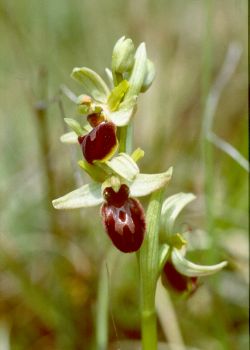Sussex ecologist helps find new clues on climate change
By: Alison Field
Last updated: Wednesday, 22 September 2010

A Sussex ecologist's study of rare orchids, conducted over more than three decades at the Castle Hill National Nature Reserve near Woodingdean, has provided a powerful - and much needed - new source of data for studying climate change, according to research published this week in the British Ecological Society's Journal of Ecology.
The scarcity of reliable long-term data on phenology - the study of natural, climate-driven events such as the timing of trees coming into leaf or plants flowering each spring - has hindered scientists' understanding of how species respond to climate change.
But new research by Professor Michael Hutchings from the University of Sussex and a team of ecologists from the University of Kent, the University of East Anglia (UEA) and the Royal Botanic Gardens, Kew shows that plants pressed up to 150 years ago tell the same story about warmer springs resulting in earlier flowering as field-based observations of flowering made much more recently.
The team examined 77 specimens of the early spider orchid (Ophrys sphegodes) collected between 1848 and 1958 and held at the Royal Botanic Gardens, Kew and the Natural History Museum in London.
Because each specimen contains details of when and where it was picked, the researchers were able to match this with Meteorological Office records to examine how mean spring temperatures affected the orchids' flowering.
They then compared these data with field observations of peak flowering of the same orchid species at Castle Hill from 1975 to 2006 and found that, in both the pressed plants and the field observations, the orchid flowered six days earlier for every rise in mean spring temperature of one degree Centigrade.
The results are the first direct proof that pressed plants in herbarium collections can be used to study relationships between phenology and climate change when field-based data are not available, as is almost always the case.
Mike said: "Scientists have long suspected that these archives might help us understand the effect of climate change on plants, but this is the first study to prove the validity of this idea.
"There are about 2.5 billion specimens of plants and animals stored worldwide in herbariums and museums. This result demonstrates that this material can be used to predict accurately how flowering times will respond to changing climate, which is important for many purposes, such as being able to predict how climate change will affect plant pollination rates and the availability of pollen and nectar to feeding insects."

